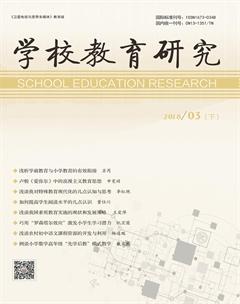Help Learners Use Their Sensory Channels Effectively to Learn English
赵桂花
Sensory channels of learning mean that language is received and transmitted primarily through the ears, eyes and hands. Below are the features of three varieties of sensory channels.
Ⅰ. Visual (eye-gate)
Visual learners learn better when they can read or see the information.
Ⅱ.Auditory (ear-gate)
Auditory student learn better when the information primarily comes through the ears.
III.Hand-on (physical movement)
Hands-on students like lots of movements and enjoy working with tangible objects and other media.
I want to show some good activities on how the language teachers should develop the language skills of students with different sensory preferences.
ACTIVITY 1. John's mother was ill, needing some money. Three of his four friends have lent money to him except one person. Please try to find out who is the person according to four sentences below.
Tom: I remember to have lent John some money.
Sandy: I remember to lend some money to John.
Bill: I remember that I lent some money to John.
Mary: I remember lending some money to John.
Answer: Sandy
[Analysis]: This activity puts the grammar point in the context of a communicative situation. It can help students to remember this point easily and feel interested in learning process.
ACTIVITY 2 . Tell students this story, some of them can write down some key words quickly.
“When Mr. John went out for a walk, it started to rain, Mr. John did't carry anything or an umbrella. However, he kept walking. His clothes were wet and so were his shoes, but his hair was not wet at all, why? Think about it!”
Answer: bald
[Analysis]: Students who are auditory learning are interested in this type of activity, meanwhile writing down notes gives visual and hand-on students some supplements.
ACTIVITY3 . Please guess the meaning of sentences outline.
1.When Tom saw John, he laughed at Tom and said, ”Your flys undone!”
2. Two boys ganged up on Tom in the schoolyard and made him say uncle!
Answer:1.----你的拉鏈开了。
2.----臣服。
[Analysis]: Besides the advantage of Activity 3, it can make the classroom atmosphere amusing.
ACTIVITY 4. Make students to fill the proper words using the letters ,then translate them.
1.A near neighbor is better than a _____(tasditn) cousin.
2.______(iosntac) speak louder than words.
3.Gather _____(sesor) while you may.
4.Losers are always in the _____(grown).
5.You can't teach a dog new _____(ikctrs).
6.Kill two birds with one ______(onste).
7.Look on with _____(oldfed) arms.
1.遠亲不如近邻。(distant) 2.做而言不如起而行。(actions) 3.花开堪折直须折,莫待无花空折枝。(roses) 4.胜者为王,败者为寇。(wrong) 5.老狗不会新花样。(tricks) 6.一石二鸟。(stone) 7.袖手旁观。(folded)
[Analysis]: Give them a good learning environment in which all the sensory are involved.
ACTIVITY 5. Read the text below
A doctor working in a village was very annoyed because many people used to stop him in the street and asked him for advice. In this way, he was never managed to earn much money. He made up his mind to put an end to this. He was stopped by a young man who said to him, “Oh, doctor, I am so glad to see you. I've got a severe pain in my left side.” The doctor pretended to be interested and said,” Shut your eyes and stick your tongue out of your month.” Then, he went away, leaving the man standing in the street with tongue hanging out and a large crowd of people laughing at him.
When doing this activity, ask students to have a quick reading then do the following tasks.
1. Discussion questions.
2. Role Play
3. Gap---filling
4. Write down a story on the notebook.
In this research paper, we have analyzed the sensory channels and their respective features. Meanwhile, we have provided typical types of activities to match varied sensory channels. we have also emphasized that language teaching and learning should focus on developing students language skills and strategies.

